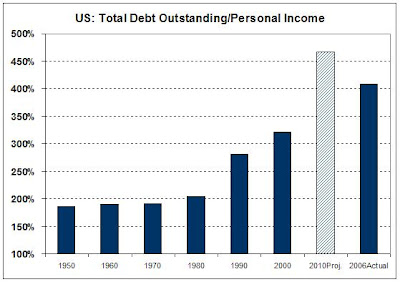PBoC Raises Reserves Again..and Again...and Again
Global trade with China has spurred a massive build-up in containerships. It makes sense, up to a point, because parts and finished manufactured goods are shipped in containers and China is far away from the voraciously consuming nations of the West, requiring longer voyages. The proverbial "slow boat to China" has become an awesome fleet of modern, fast liners that continuously circles the globe. It is mostly a one-way trade that creates serious directional imbalances to the liner operators, but that is another subject.
Let's look at the data, from AXS Marine. In just six years, the existing carrying capacity in TEU (twenty foot equivalent containers, the standard measurement unit) has more than doubled. The number of vessels has gone up by 80%, indicating the drive towards bigger-size ships. The order book (ships on order) has also expanded fast.

For perspective, total capacity was around 3 million TEU in 1996, before the great Chinese trade explosion. So, in just 10 years the liner capacity has almost quadrupled. Where once factories in Akron and the Ruhr shipped their goods by rail and truck, now China's trade tsunami rolls upon the high seas in millions and millions of container boxes.
Can it be slowed down? As I expected, China's authorities are getting increasingly concerned that huge increases in capital investment will shortly lead to overcapacity: they just raised bank reserve requirements yet again from 10.5% to 11%, the seventh time in eleven months, in an effort to stem credit expansion (the "liquidity" I have been talking about). China's new bank loans are running at double the rate of last year: in just the first three months of 2007 new loans came in at 1.4 trillion yuan ($180 billion), half the amount for the whole of 2006. Interest rate rises are also in the works: PBoC's benchmark 1-year rate is at 6.39% with inflation running at 3.3%. Analysts expect a couple of more increases this year.
Late arrivals to the Chinese stock party have been thumbing their noses to authorities, currently driving stock prices up in vertical exuberance. They will soon realize that, as in any casino, the house always wins in the end.
As for my friends in the shipping business.. the First Law of The Sea has not been repealed: it's still a VERY cyclical business, even if the current up-leg has outlasted every previous one. We really don't want to see the extra containers becoming modern "Hoovervilles" in Shanghai and Shenzhen - or the Ports of LA and San Diego, for that matter.
Let's look at the data, from AXS Marine. In just six years, the existing carrying capacity in TEU (twenty foot equivalent containers, the standard measurement unit) has more than doubled. The number of vessels has gone up by 80%, indicating the drive towards bigger-size ships. The order book (ships on order) has also expanded fast.

For perspective, total capacity was around 3 million TEU in 1996, before the great Chinese trade explosion. So, in just 10 years the liner capacity has almost quadrupled. Where once factories in Akron and the Ruhr shipped their goods by rail and truck, now China's trade tsunami rolls upon the high seas in millions and millions of container boxes.
Can it be slowed down? As I expected, China's authorities are getting increasingly concerned that huge increases in capital investment will shortly lead to overcapacity: they just raised bank reserve requirements yet again from 10.5% to 11%, the seventh time in eleven months, in an effort to stem credit expansion (the "liquidity" I have been talking about). China's new bank loans are running at double the rate of last year: in just the first three months of 2007 new loans came in at 1.4 trillion yuan ($180 billion), half the amount for the whole of 2006. Interest rate rises are also in the works: PBoC's benchmark 1-year rate is at 6.39% with inflation running at 3.3%. Analysts expect a couple of more increases this year.
Late arrivals to the Chinese stock party have been thumbing their noses to authorities, currently driving stock prices up in vertical exuberance. They will soon realize that, as in any casino, the house always wins in the end.
As for my friends in the shipping business.. the First Law of The Sea has not been repealed: it's still a VERY cyclical business, even if the current up-leg has outlasted every previous one. We really don't want to see the extra containers becoming modern "Hoovervilles" in Shanghai and Shenzhen - or the Ports of LA and San Diego, for that matter.
























